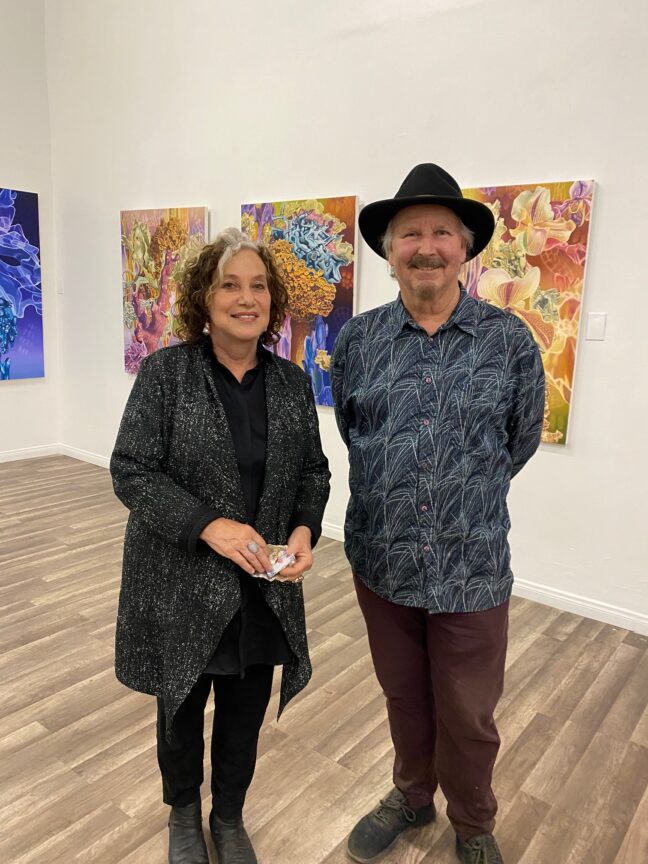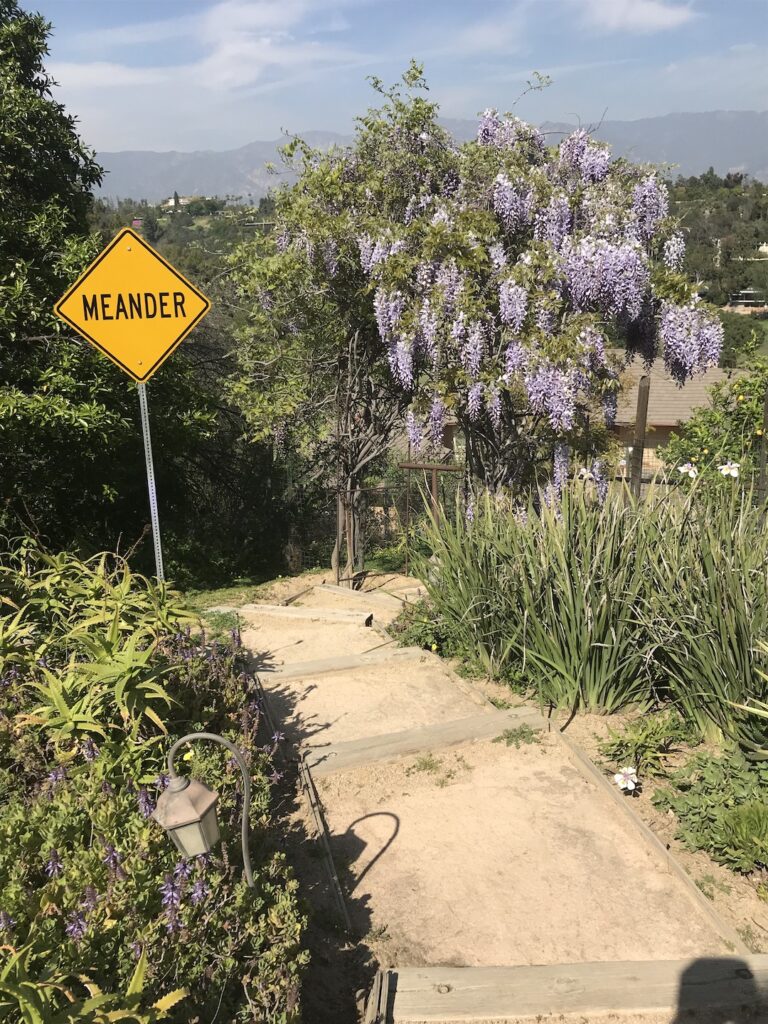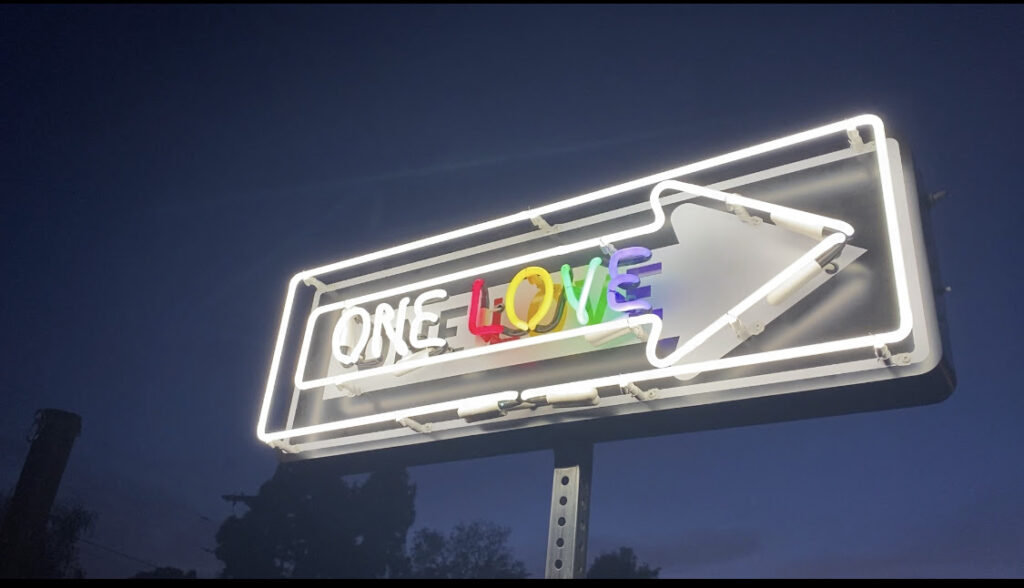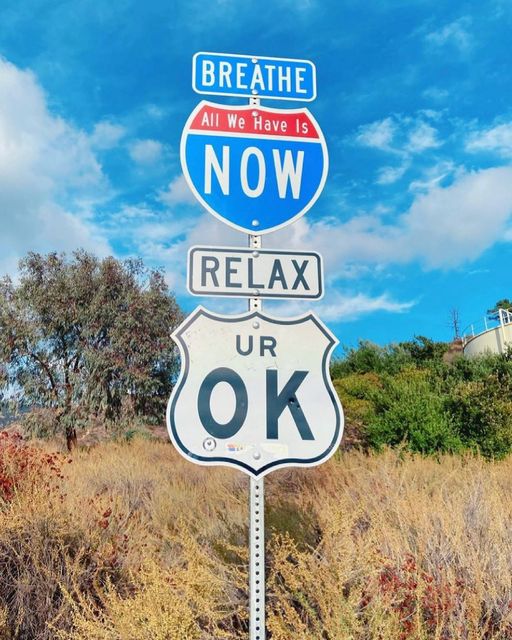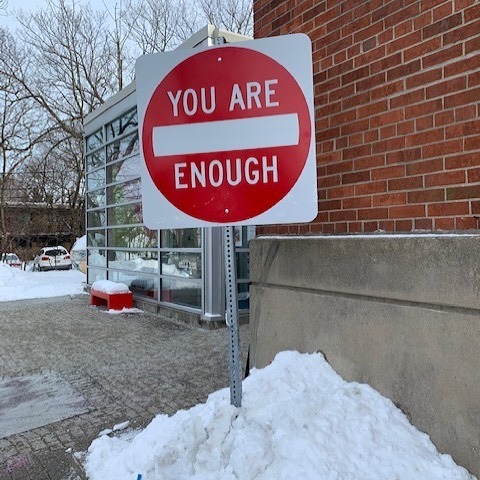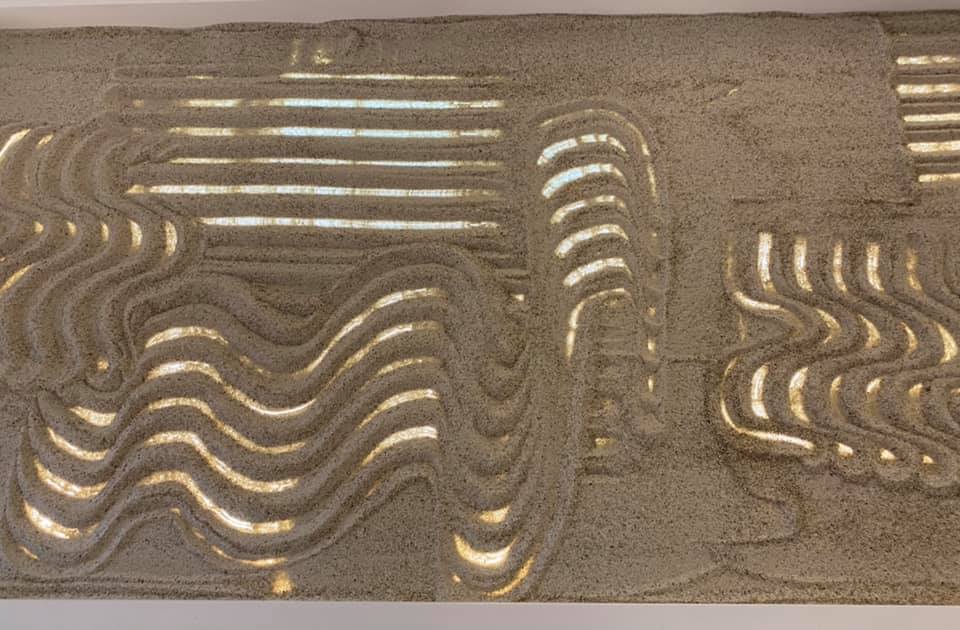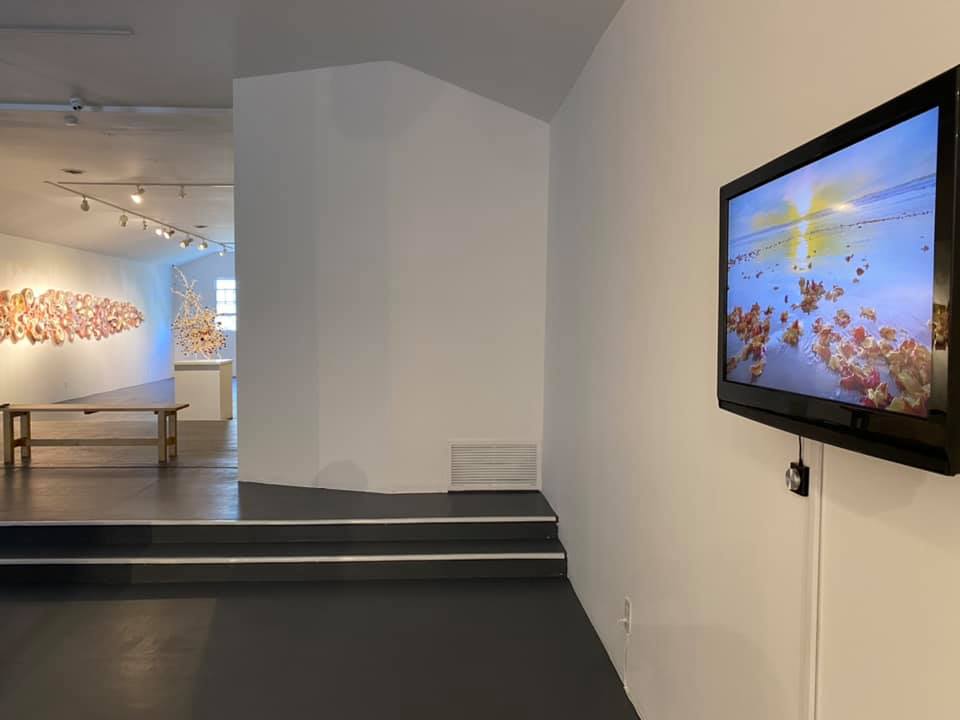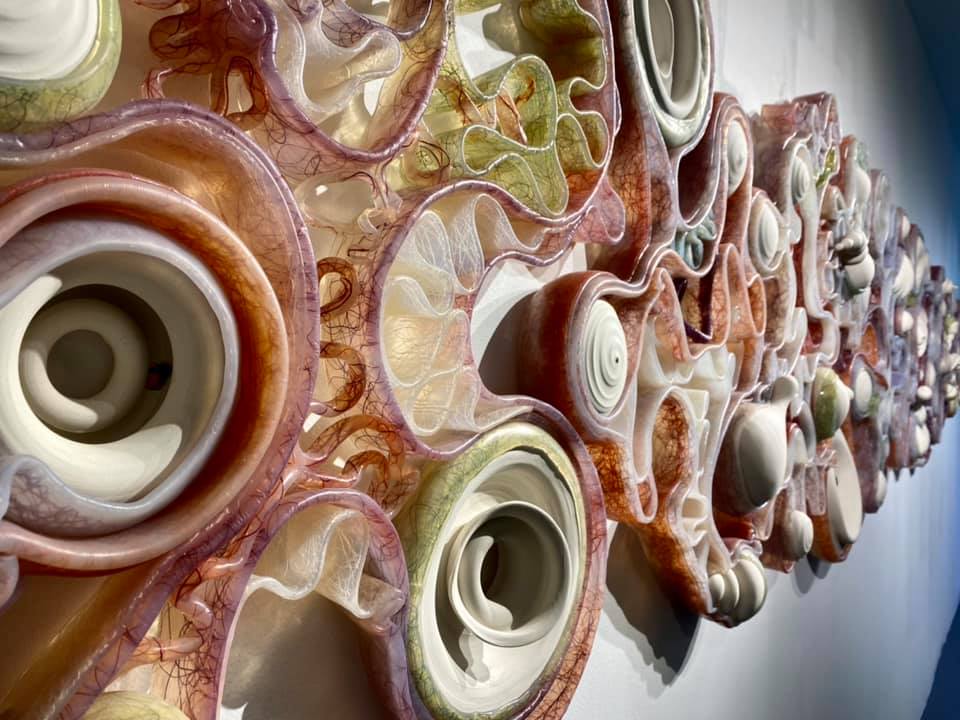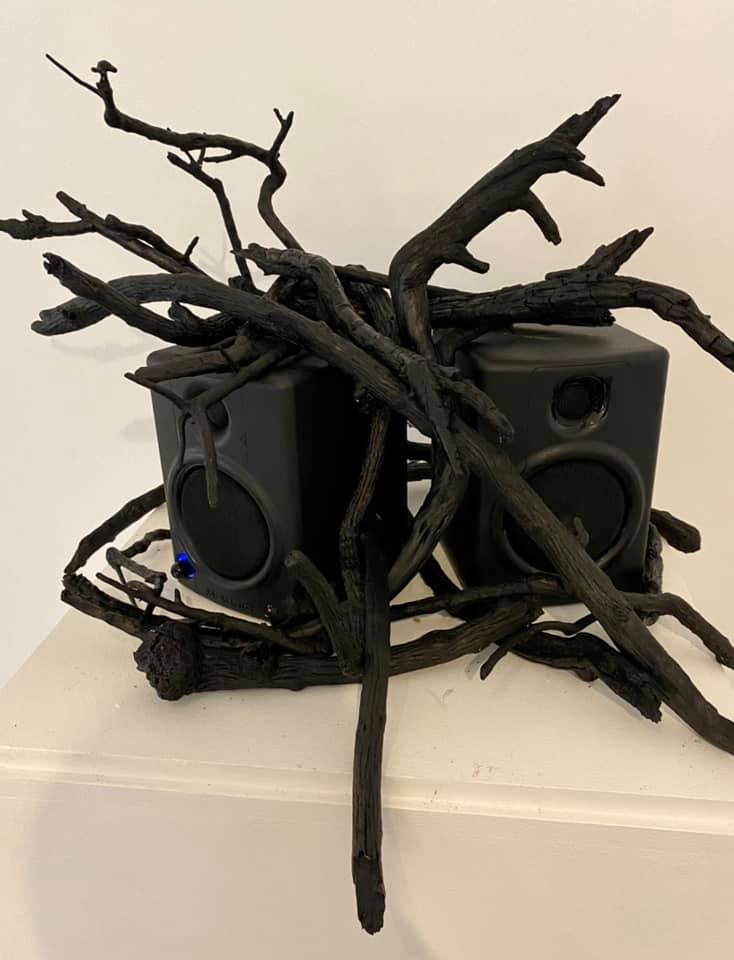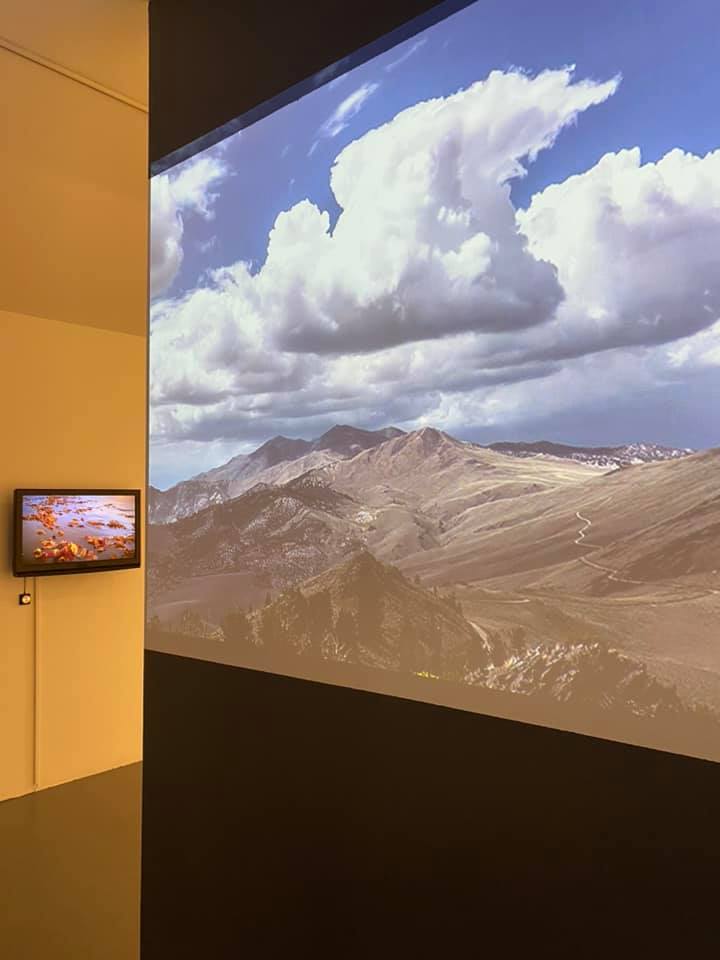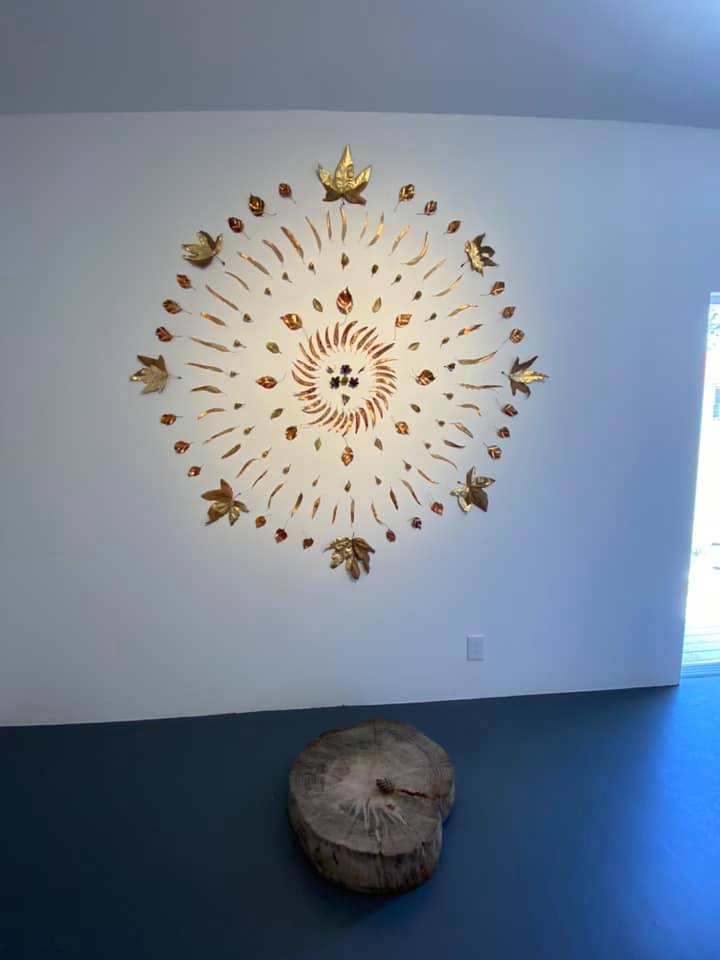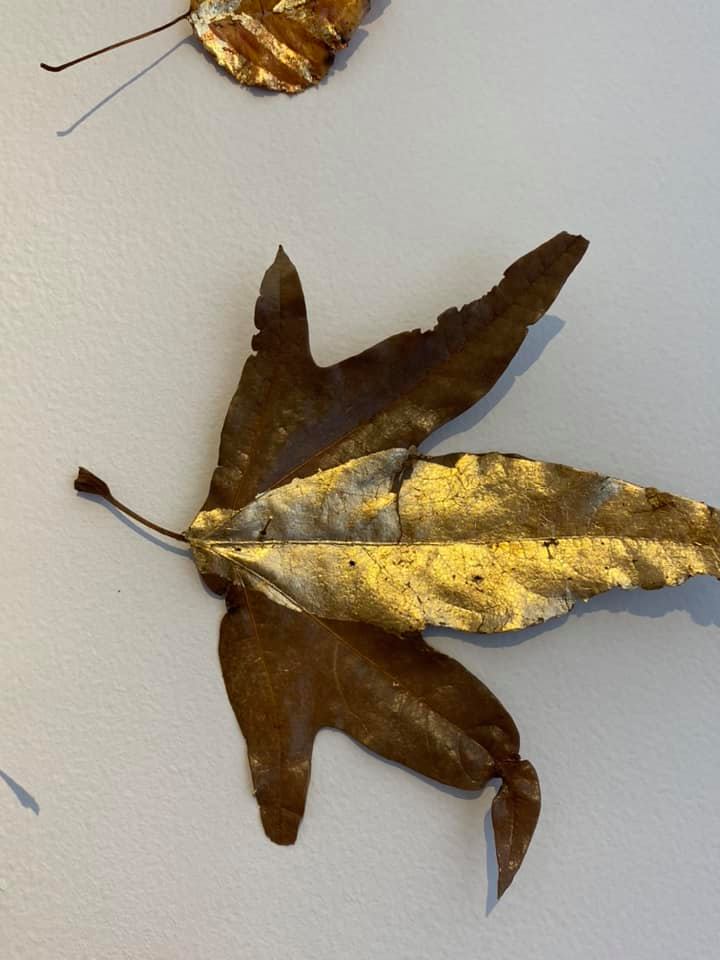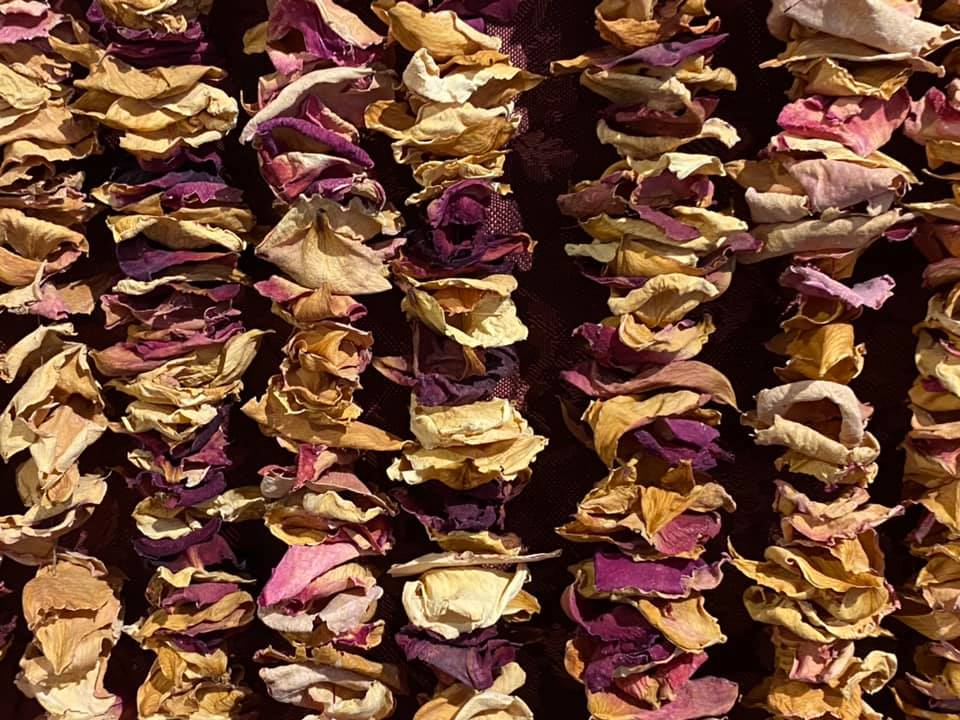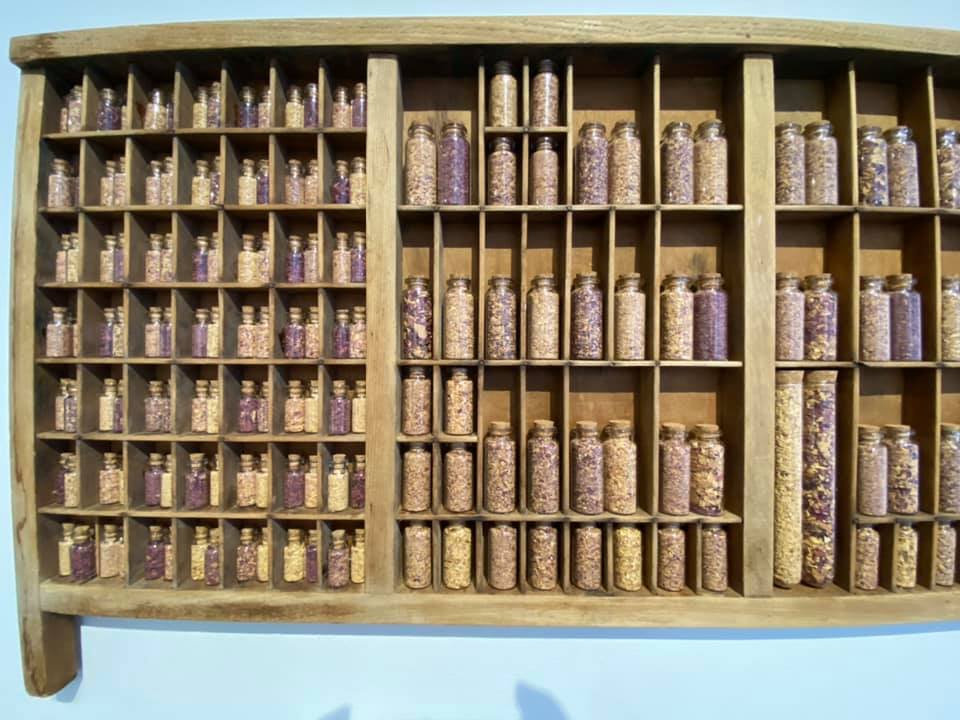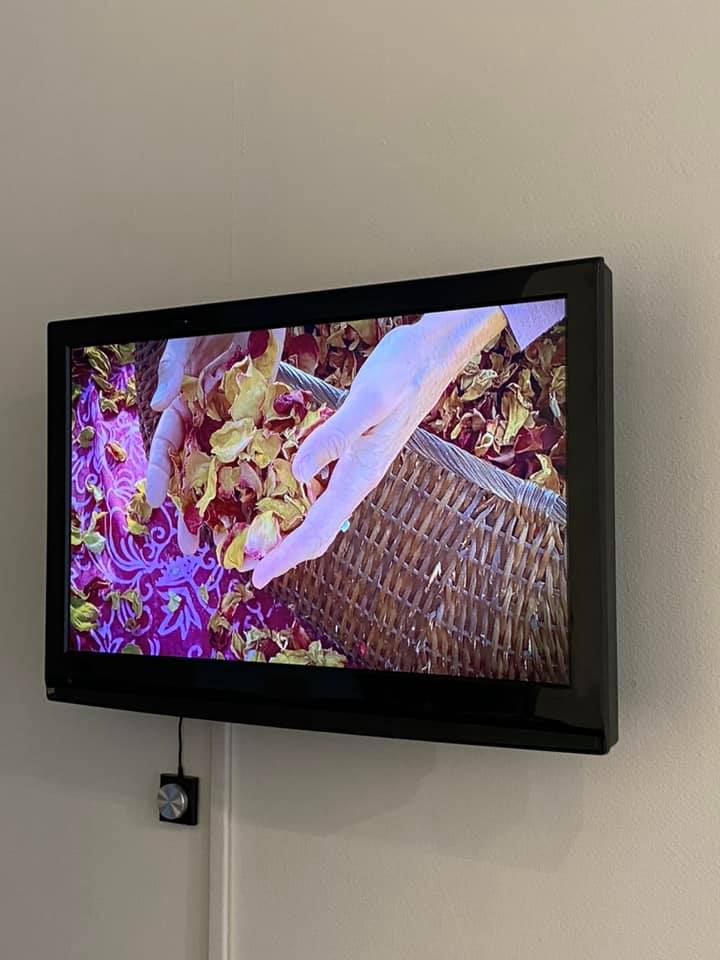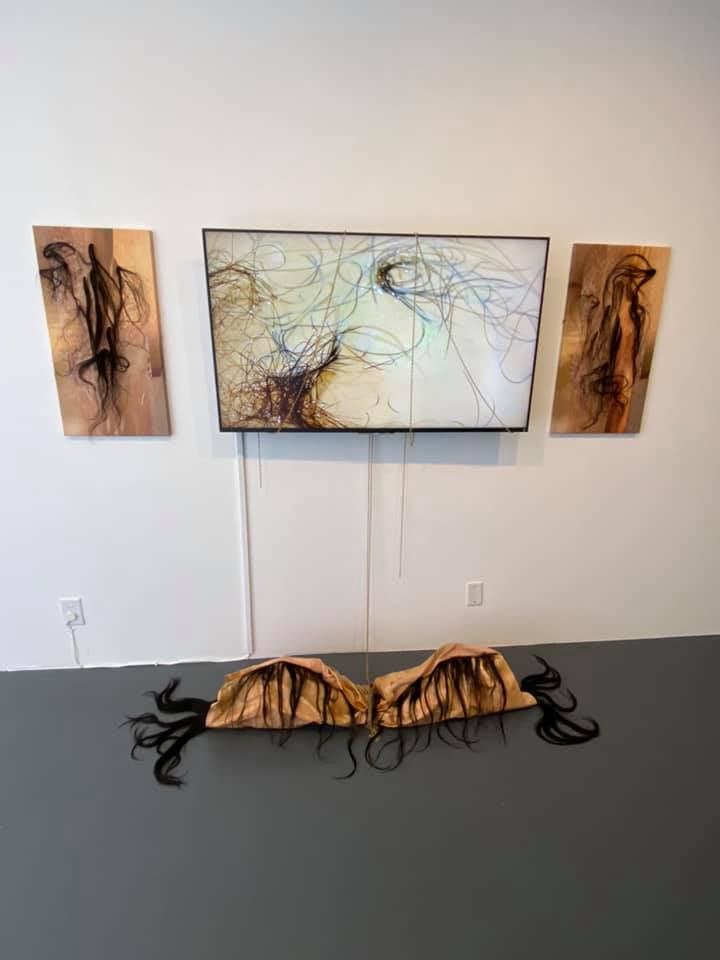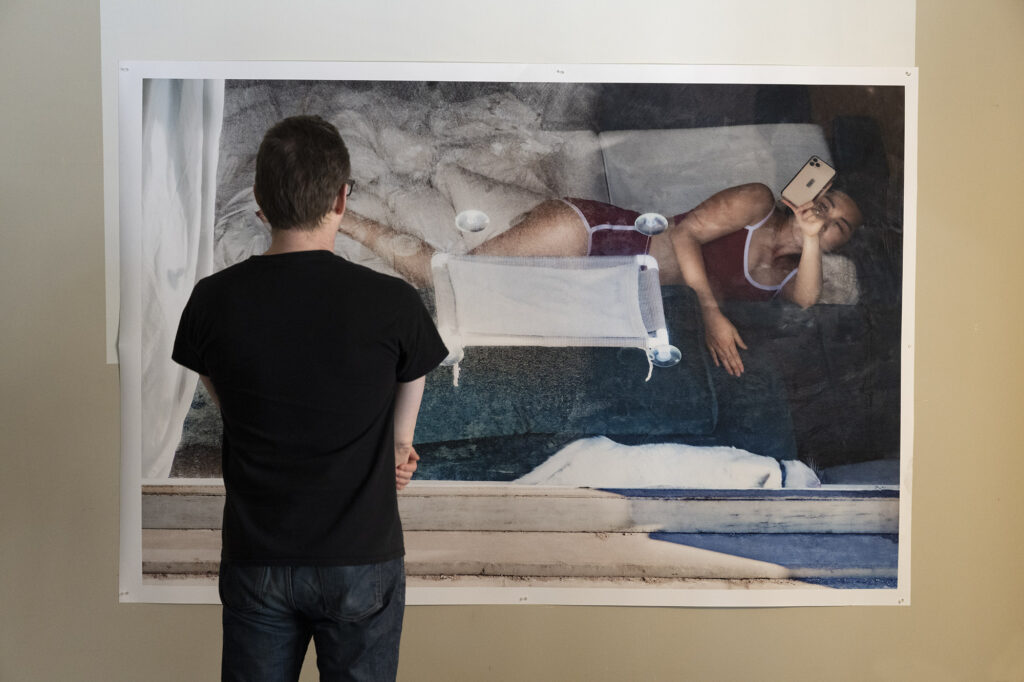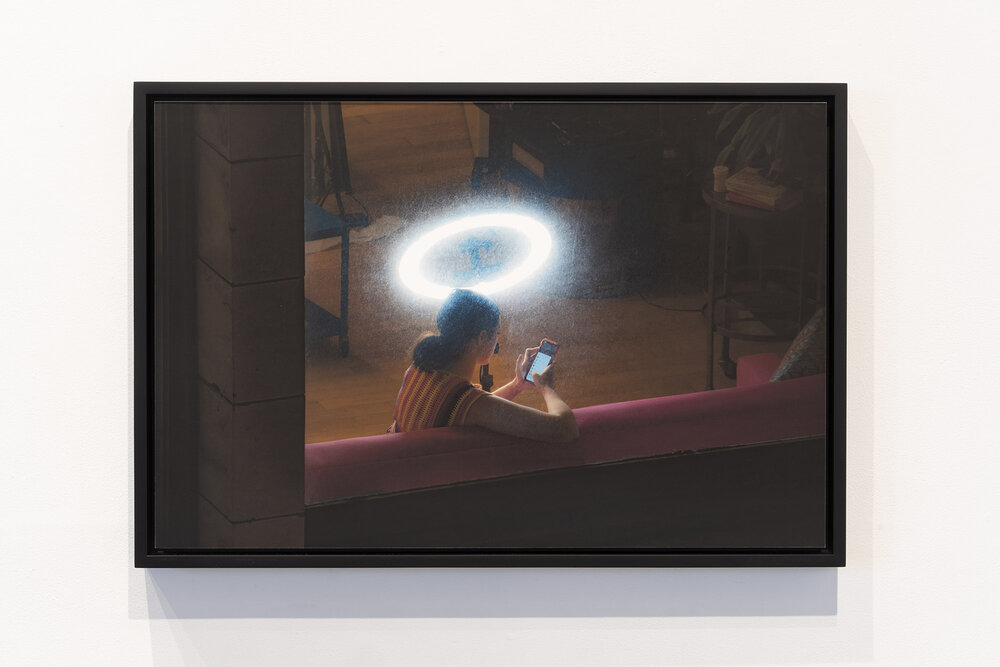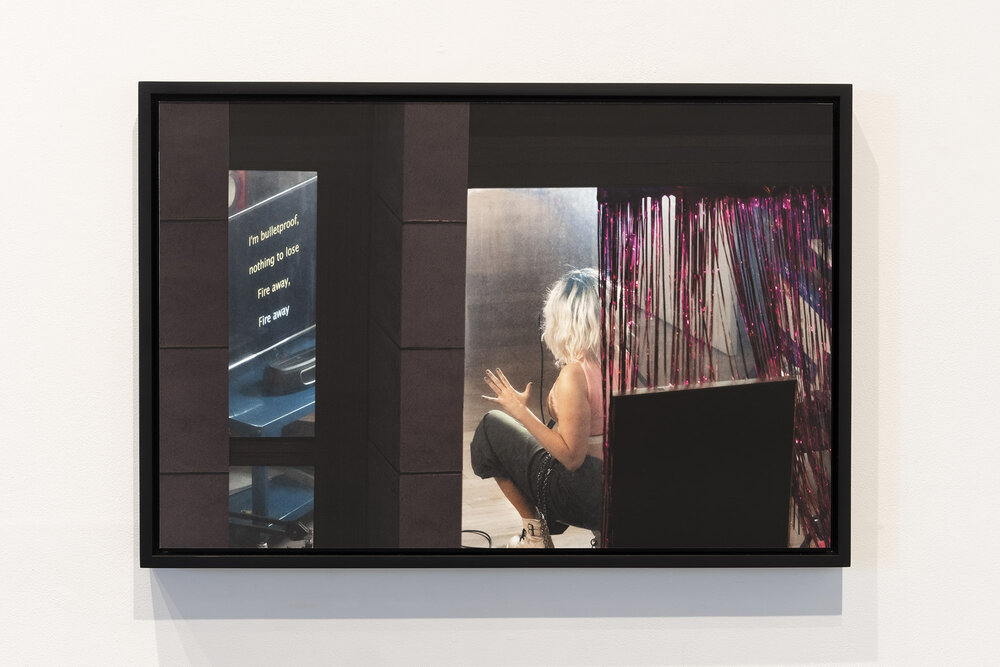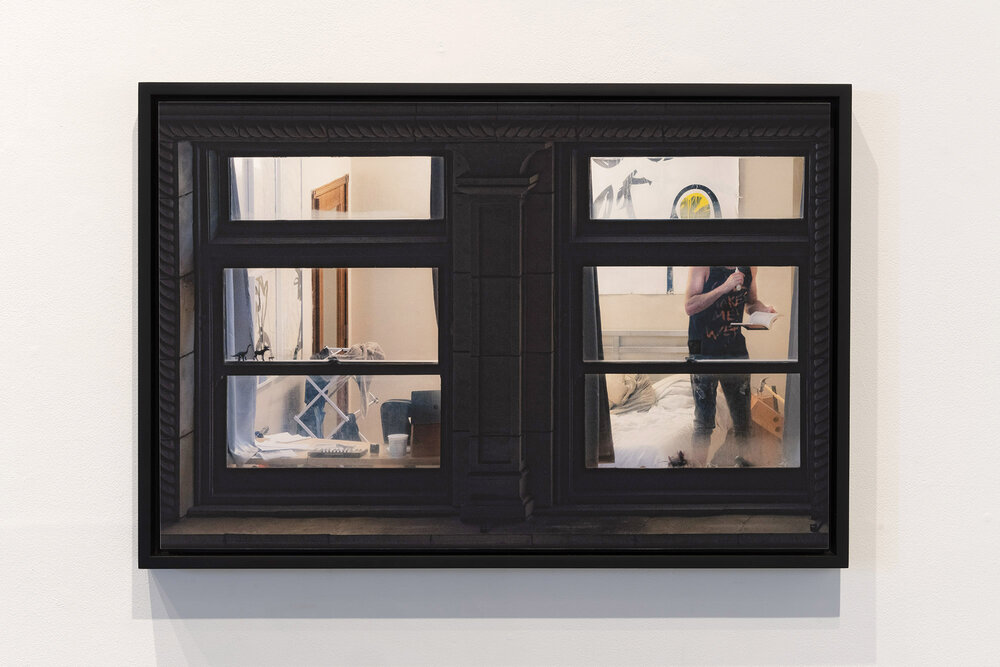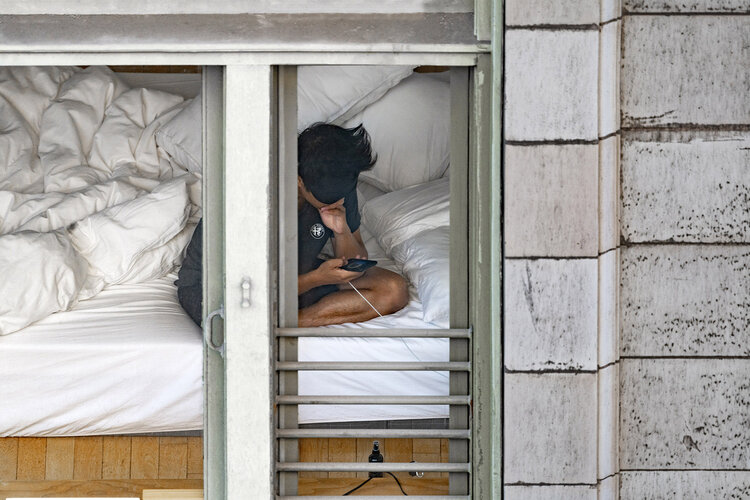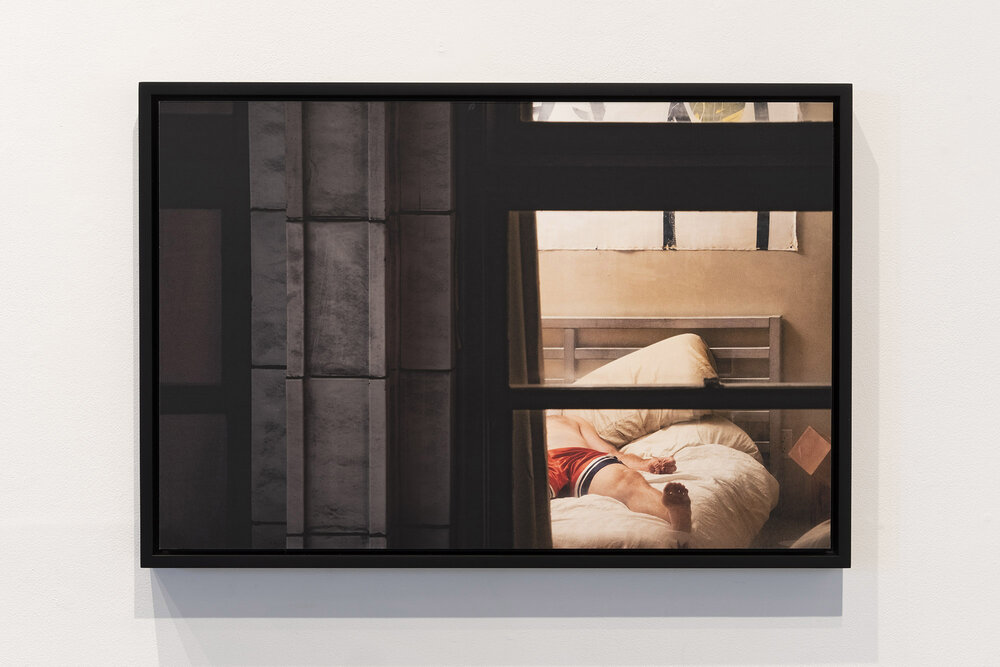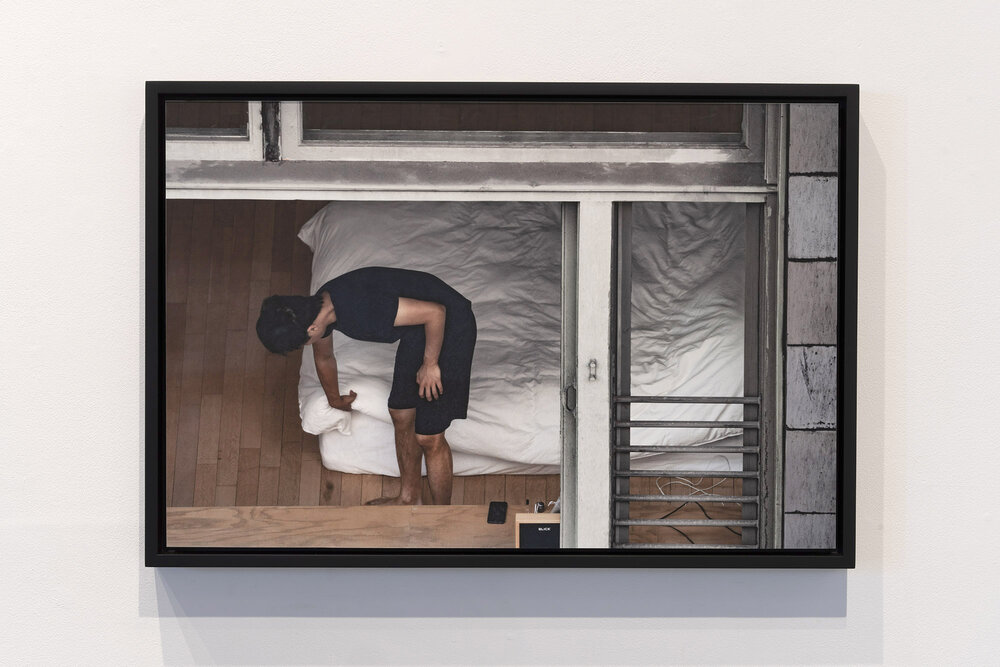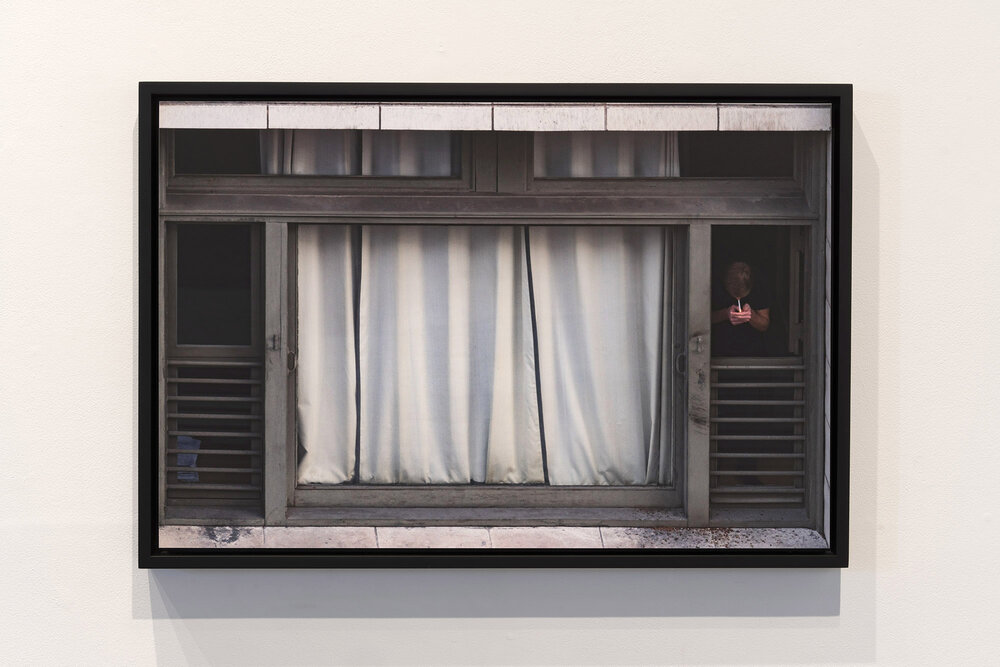
Originally scheduled to open when COVID-19 hit in 2020, through June 4th this lustrous collection of works is now viewable at Wonzimer Gallery in DTLA. The article and most of the photos are taken from its earlier frozen-in-time incarnation, but it is expertly curated at Wonzimer.
The radiantly lovely works of Gary Brewer and Aline Mare are a fine collection by married artists enmeshed in a beautiful dance of passionate art and companionship.

Entwined Roots: Symbiotic Relationships is a tribute to both artists’ works, individually and viewed together.

Mare works in hypnotically dense, fabulously fecund mixed media; Brewer in oil on canvas. Both are abstract artists, each non-figuative piece here is nonetheless rooted with recognizable elements from their artistic pasts that are sublimely figurative images of nature.
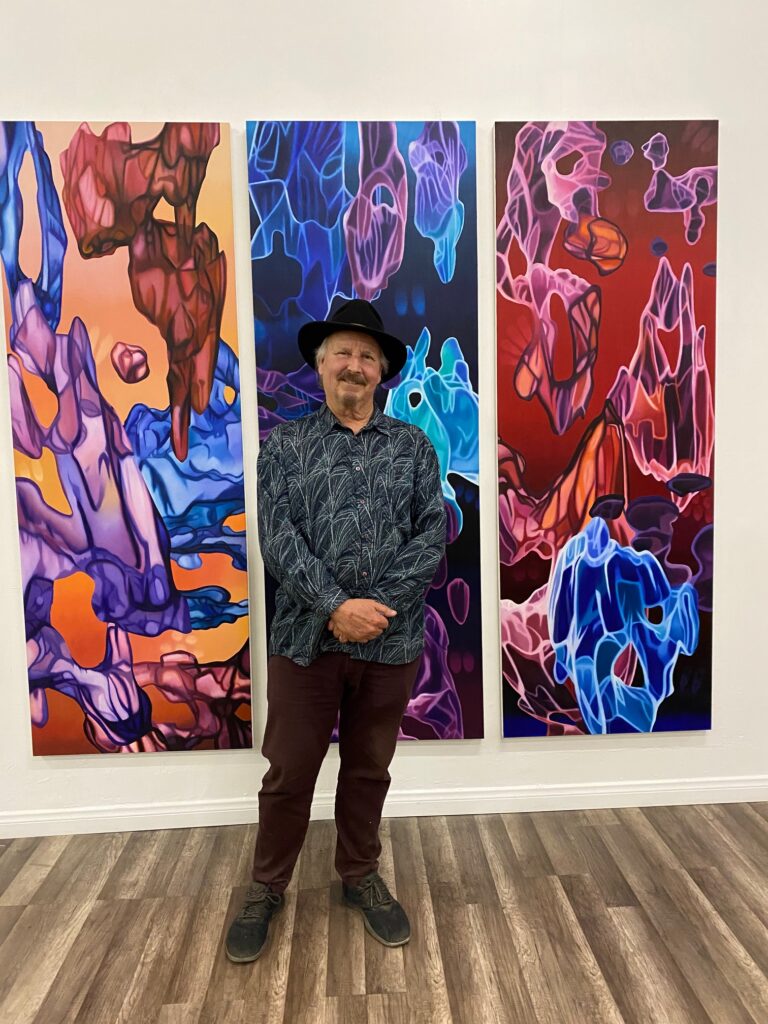
Their palettes are rich, their sense of beauty sublime. There is a wildness in both artists’ works that defies categorization, that welcomes the subversive and the sweet in equal measures.
One can view the cosmos or the untamed sensuality of nature in both artists’ works. Mare gives us a universe in a forest floor; a galaxy within a rain soaked garden. Brewer gives us twined cells, seeds and flowers, twisted cords of natural beauty that are larger than life. Both create works that flow in a fine and fanastical series of perfectly calibrated colors and patterns that are almost hypnotic.

Mare’s “Green Seeded” combines a delicate, evocative painted background with photographic images of seeds and images from space. Layers of paint shift the image so that the viewer is both above, beyond, and within the it; we are seeing the vast and infinite in the small and perfect.
Brewer’s works here feel more decidely floral, but what a fierce and marvelous series of blooms these are. In his “Constellation,” or in “Seeds of Life,” we see orchids that seem to burst from the canvas with a muscular life-force. These flowers are no swoony, scented bouquet, but rather vital, living entities.

Where Brewer works in vastly large canvases depicting what could be minute objects – petals, seeds, flowers – writ large, Mare’s smaller works depict a strange and tumultous vastness contained in a smaller space. Both artists seem to work in a kind of synchronistic counterpoint, creating a sense of unseen wonder and hidden, intertwined gestural relationships.
And speaking of relationships, their own – to each other, to their art, to the way in which they seem to play off one another both in life and in this exhibition, is intrinsic to this exhibition. It is a great ritual alchemy celebrating the “other” within all of us.
Both artists invite the viewer – or perhaps the correct word here is compel – to go beyond surface perceptions and into a deeper, stranger, more wonderous realm: that of intertwined roots of life and love and into the celestial, where words may be inchoate but beauty falls like a welcoming, luminous light.
Now that this exhibition is no longer in COVID limbo, the life force it brings to the viewer cannot be constrained. Drink it in deeply, in the heart of downtown.
Wonzimer is located at 621 S Olive St, Los Angeles, CA 90014 – no appointment is necessary; check open hours; through June 4th.
- Genie Davis; Photos at Wonzimer by Genie Davis; photos provided by the artists of individual works.


